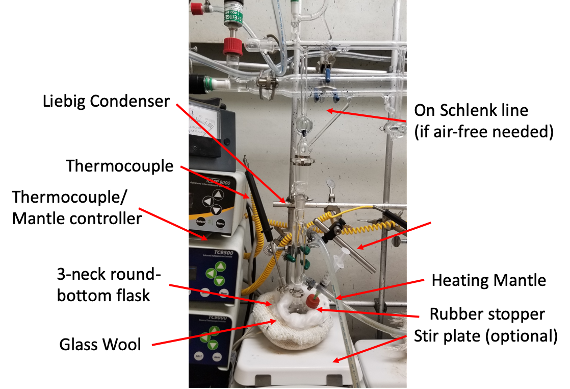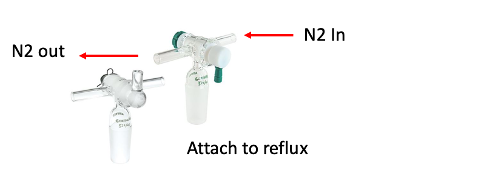


Prepare two stock solutions in a glovebox. Stock solution 1 should have 5mL of acetone in a septa vial. Stock solution 2 should contain 5~10 mM of bis(benzene) chromium(0). For this stock solution, add about 0.01 g of bis(benzene) chromium(0) to 5mL of anhydrous acetone in a septa capped vial. Inject in 5mL of air-free acetone (kept in a glovebox and completely free from air) to the flask and heat to reflux (48-53°C). The air free acetone can be placed in a septa capped vial and injected with syringe that has been flushed with nitrogen three times from the primary flask to prevent any air getting in. Dropwise, inject the second solution to the flask over the course of 2~3 hours. After injection, wait an additional thirty minutes under reflux. Finally, remove substrates or 2D materials from the solution and rinse with acetone in air.

Adapter to bring in nitrogen (Chemglass AF-0509-B) when vacuum line is unavailable.
| C12H12Cr | acetone | time | ~ intercalated in Bi2Se3 |
|---|---|---|---|
| 0.01 g | Total = 10 mLs | 3.5 hours | 6 atm % ± 2% |
M. Wang, D. Williams, G. Lahti, S. Teshima, D. Dominguez-Aguilar, K. J. Koski, Chemical intercalation of heavy metal, semimetal, and semiconductor atoms into 2D layered chalcogenides. 2D Materials, 5, 045005 (2018)